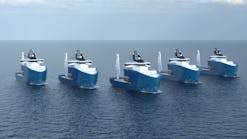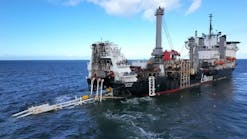Industry's refocus will alter fleet to meet demand
Victor Schmidt
Exploration Editor
It has been another difficult year for the contract seismic industry. Data saturation in many markets, limited spending on new multi-client surveys, high debt loads, and delays in industry acceptance of technology advances have all hampered the seismic con-tractors from capitalizing on their considerable capabilities.
The marine seismic industry has been beaten by fierce internal competition and the oil operators' drive for maximum data at minimal cost. Now, the cheap ride is over. The seismic industry has no more to give and is now regrouping and reconstructing its business. The bottom line is that data purchasers will have to pay more for the value they receive from the seismic technology they need and use (Offshore, October 2002). Seismic industry cash flow has been negative and, because of oil company consolidation, the speculative model of seismic sales has become ineffective.
Shaping change
Change is required and has begun. Fleet consolidation continues, but most of that effort has already occurred through mergers over the past three years. Only TGS-Nopec left the vessel business this year, having sold their last vessel in November 2002. Now the tough internal consolidation begins. The active fleet must be reduced by:
- Decommissioning vessels from seismic operations
- Converting ships to other purposes
- Selling vessels into the market to generate cash
- Retiring/destroying the oldest hulls.
Much of this needed reduction is already accomplished through stacking ships. No clear numbers are available for stacked vessels or for the disposition of the onboard equipment. Since much of the equipment is leased, it is easily dealt with. Crews can be released so that continuing vessel costs collapse to slip (docking) fees. This buys some time and preserves the option of returning the vessels to activity once demand improves.
Only one or two of the remaining contractors can now be all things to all oil companies. All the others are specializing their capabilities. With tighter control on more focused offerings, acquisition costs will flow directly to the survey buyer. This new transparency should be good for all parties.
Click here to view Survey results.
New competition
Large seismic vessels collect many 3D speculative seismic surveys, whose economics have been undercut by oil company mergers.






